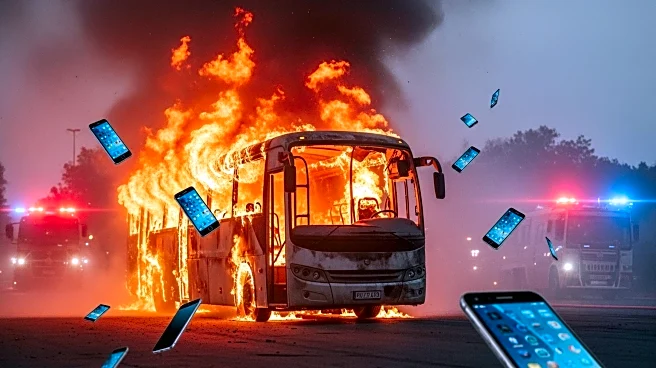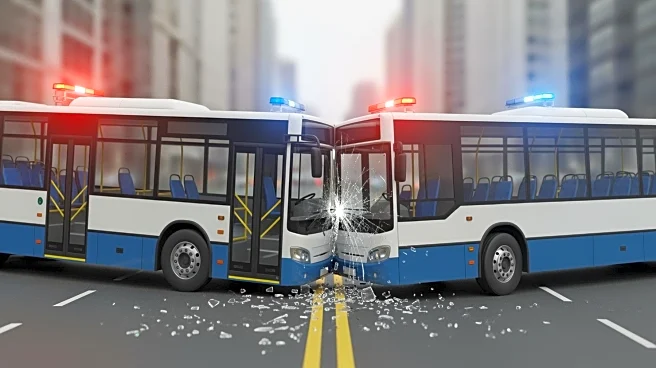What's Happening?
A tragic bus fire in southern India resulted in the deaths of at least 20 people, with reports indicating that hundreds of smartphones onboard intensified the blaze. The fire occurred after the Bangalore-bound
bus collided with a motorcycle, rupturing its fuel tank and causing an explosion. Forensic experts revealed that the bus was carrying 234 mobile phones, whose lithium-ion batteries likely exacerbated the fire. The incident has raised concerns about the safety of transporting electronic devices with flammable batteries, as well as the need for stricter adherence to safety regulations in public transport.
Why It's Important?
The incident underscores the potential hazards associated with lithium-ion batteries, which are commonly used in smartphones and other electronic devices. These batteries can pose significant fire risks when damaged, leading to uncontrollable temperature increases. The tragedy highlights the need for improved safety measures in public transport, particularly in countries with high road accident rates like India. It also raises questions about the safe transportation of electronic goods, which is crucial for the e-commerce industry and consumer safety.
What's Next?
Authorities have launched an investigation into the crash, focusing on possible negligent driving. The findings could lead to stricter enforcement of safety regulations for public transport operators and guidelines for transporting electronic devices. The incident may prompt discussions on enhancing safety protocols for lithium-ion batteries, potentially influencing industry standards and regulatory policies. Stakeholders, including transport operators and e-commerce companies, may need to reassess their practices to prevent similar tragedies.
Beyond the Headlines
The bus fire highlights broader issues of public safety and the challenges of regulating emerging technologies. As the use of electronic devices continues to grow, ensuring their safe transportation becomes increasingly important. The incident may drive innovation in battery technology, aiming to reduce fire risks and improve safety. It also emphasizes the need for comprehensive safety education and training for transport operators, contributing to long-term improvements in public safety standards.











